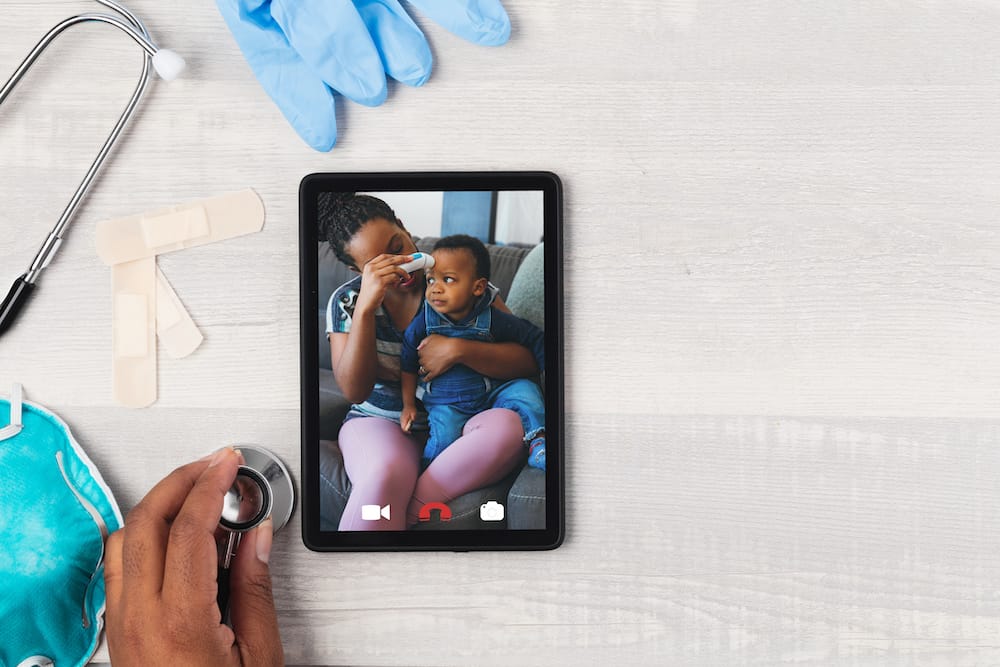New research from the University of Pittsburgh and UPMC shows that telemedicine visits conducted for children with primary care providers (PCPs) are associated with fewer antibiotic prescriptions than telemedicine visits with virtual-only direct-to-consumer (DTC) companies.
The findings, published in JAMA Network Open, highlight the importance of supporting integrated telemedicine within the primary care setting and the potential challenges and limitations of delivering virtual-only acute care to children.

“Respiratory tract infections are one of the most common reasons that kids receive antibiotics, but these medications are only effective when infections are caused by bacteria, not viruses,” said senior author Kristin Ray, M.D., M.S., associate professor of pediatrics at the Pitt School of Medicine and pediatrician at UPMC. “Making sure kids get antibiotics when they need them and don’t get them unnecessarily is important for children and families. At a public health level, antimicrobial resistance is a growing issue, so we need to be judicious in our use of antibiotics in order topreserve our arsenal of antibiotics for when we really need them.”
In a 2019 study, Ray and her team found that antibiotics were prescribed more often during DTC telemedicine visits than during in-person PCP appointments. However, few PCPs offered virtual visits at that time, leaving unanswered questions about how antibiotic management would look during PCP-based telemedicine visits.
Since the COVID-19 pandemic, telehealth use within primary care settings has skyrocketed, and many PCPs now offer both virtual and in-person appointments to their patients. This shift in the telehealth landscape allowed the researchers to compare antibiotic prescribing via telemedicine appointments with PCPs compared to DTC providers.
The researchers analyzed claims data from a large commercial insurer database, focusing on children aged up to 17 who had a telemedicine visit in 2022 for an acute respiratory tract infection (ARTI), a broad group of bacterial and viral infections such as sinusitis, upper respiratory tract infections, bronchitis and ear infections.
In this analysis of almost 28,000 children with virtual visits for ARTIs, the researchers found fewer children received a diagnosis that warranted antibiotics during a primary care telehealth visit (19%) compared with a DTC telehealth visit (28%). Likewise, fewer patients received an antibiotic prescription from a PCP (29%) than a DTC provider (37%).
Notably, the rate of follow-up appointments within 1 to 2 days of the first visit was lower for PCP telehealth visits (5%) compared with DTC providers (7%).
“We looked at return visits as a potential signal of undertreatment such as a missed diagnosis or a complication,” explained first author Samuel Wittman, M.S., research data analyst at the Pitt School of Medicine. “If less use of antibiotics by PCPs was because of undertreatment, we would expect to see a higher follow-up rate. Instead, we saw lower follow-up in this group.”
Lower antibiotic use in the primary care telehealthsetting could be because fewer kids with conditions warranting antibiotic use visited these providers, but Ray thinks that other factors are likely at play.
“Primary care telehealth is integrated with the patient’s ongoing in-person care, so PCPs providing telehealth visits have access to patients’ prior records, have ongoing patient-provider relationships and have the ability to bring the patient into the office if the child needs a test or to be examined more closely,” she explained. “Without these options, providers in virtual-only care settings might prescribe antibiotics ‘just in case’ more often, and they might perceive more pressure from parents to prescribe antibiotics in virtual-only settings.”
According to Ray, the study highlights the importance of regulatory and payment policies that incentivize primary care telehealth and support more seamless integration of virtual and in-person appointments.
If primary care practices cannot maintain telemedicine infrastructure, families interested in virtual appointments may not have the option of telehealth integrated with primary care and may be forced to look to virtual-only companies.
“Telemedicine meets an important need for families — it’s not always possible for parents to bring their kids to an in-person appointment,” said Ray. “Our findings suggest that PCPs can provide high-quality care with this technology, and we need to ensure that policymakers and payers thoughtfully structure telehealth programs and payment so that telehealth integrated within primary care remains a viable option for practices and families.”
Other authors on the study were Alejandro Hoberman, M.D., Lindsay Sabik, Ph.D., and Jonathan Yabes, Ph.D., all of Pitt or UPMC; and Ateev Mehrotra, M.D., M.P.H., of Harvard Medical School.
This research was supported by the National Institutes of Health (grant R01AI148159)
Throughout the year, our writers feature fresh, in-depth, and relevant information for our audience of 40,000+ healthcare leaders and professionals. As a healthcare business publication, we cover and cherish our relationship with the entire health care industry including administrators, nurses, physicians, physical therapists, pharmacists, and more. We cover a broad spectrum from hospitals to medical offices to outpatient services to eye surgery centers to university settings. We focus on rehabilitation, nursing homes, home care, hospice as well as men’s health, women’s heath, and pediatrics.








